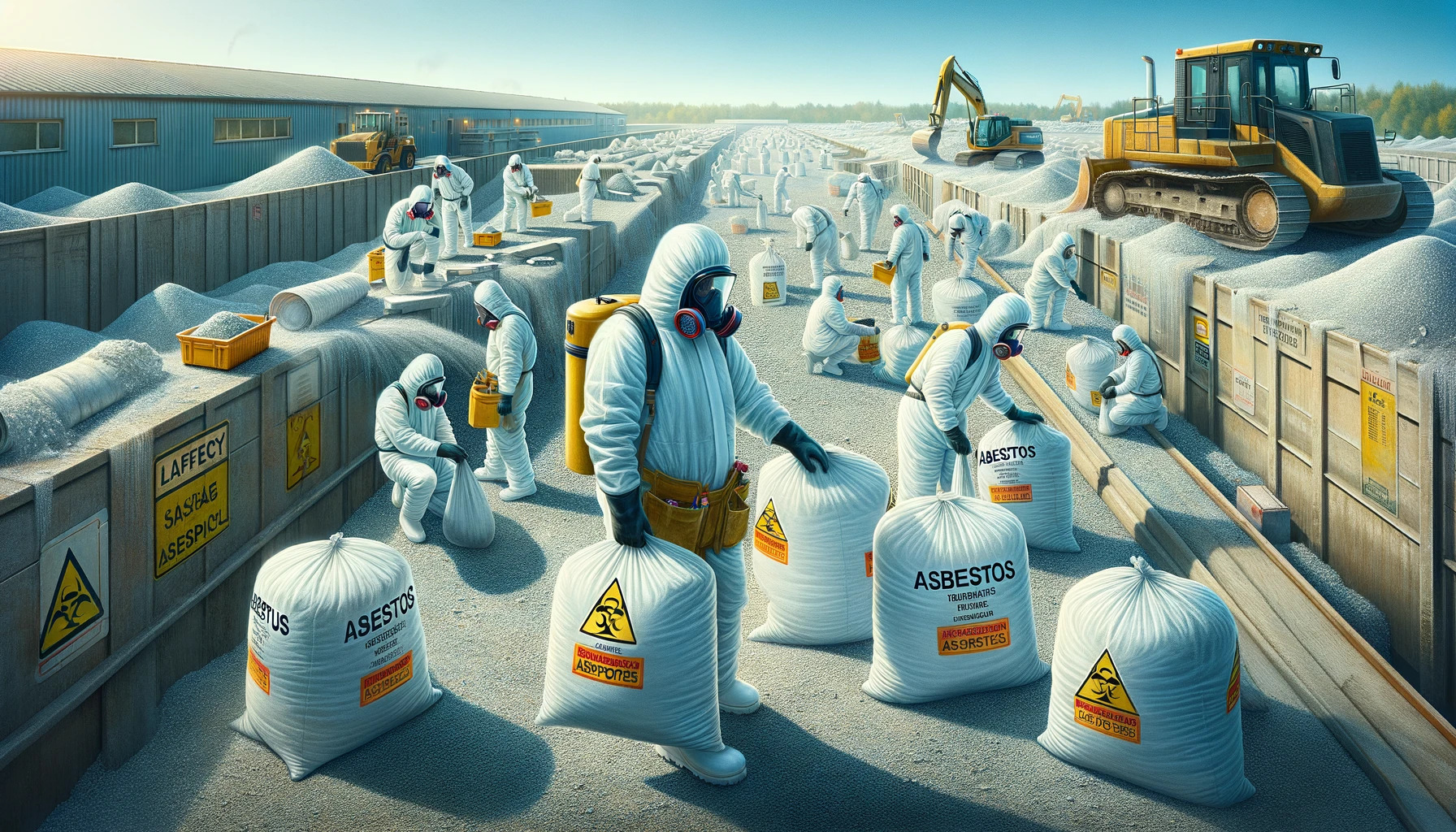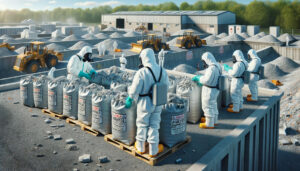
Safe Asbestos Disposal Techniques
Comprehensive Approach to Asbestos: From Identification to Safe Disposal and Beyond
Dealing with asbestos requires not only a deep understanding of its risks but also a comprehensive approach towards its safe removal and disposal. Once a popular building material, asbestos is now recognised for its potential to cause severe health issues. The key to managing this hazardous material lies in rigorous adherence to safety protocols and legal guidelines, ensuring that its removal and disposal safeguard both human health and the environment.


Understanding Asbestos Regulations and Guidelines
Navigating the Legal Landscape
In the UK, strict regulations govern the disposal of asbestos, with the Control of Asbestos Regulations 2012 being particularly pivotal. These regulations outline the legal responsibilities of individuals and businesses regarding the management and disposal of asbestos. Non-compliance is a serious matter, attracting stringent penalties, including substantial fines and legal action. Those handling asbestos must familiarise themselves with these regulations to ensure full compliance.
The Role of Health and Safety Executive Guidelines
The Health and Safety Executive (HSE) offers detailed guidelines on asbestos management, which are crucial for anyone involved in asbestos disposal. These guidelines are designed to ensure that every aspect of asbestos handling, from initial assessment to final disposal, is conducted safely. By following these guidelines, the risks associated with asbestos handling can be significantly mitigated.
Consequences of Regulatory Non-Compliance
Ignoring or bypassing these regulations and guidelines can have dire consequences. Beyond the legal implications, the health risks associated with improper asbestos disposal are severe. Asbestos fibres, when inhaled, can lead to chronic respiratory diseases and even lung cancer. Therefore, strict adherence to legal guidelines isn’t just a regulatory requirement; it’s a critical measure for public health protection.
Preparing for Asbestos Disposal
Identifying Asbestos-Containing Materials
Identifying asbestos-containing materials is the first crucial step in the disposal process. Commonly found in buildings erected before the 2000s, asbestos might be present in insulation, roofing, or floor tiles. Professional asbestos surveyors can accurately identify these materials, providing a clear understanding of the extent and nature of asbestos present in a property. This identification is crucial for planning the safe removal and disposal of the material.
Implementing Safety Measures and Acquiring Proper Equipment
Safety is paramount in asbestos removal. It demands the use of appropriate personal protective equipment (PPE), such as high-grade respirators, disposable coveralls, and protective gloves. Furthermore, the area designated for asbestos removal should be cordoned off, with access limited to only those equipped and authorised to work in it. Displaying clear warning signs is also an essential part of the preparation process, alerting all occupants to the hazards within.
Techniques to Minimise Fibre Release
An integral aspect of preparing for asbestos disposal is the implementation of techniques to minimise the release of harmful fibres. This includes methods like wetting asbestos materials before removal to reduce dust, careful handling to prevent breakage, and using hand tools instead of power tools to avoid agitating the material. These precautions are crucial in preventing asbestos fibres from becoming airborne, thereby reducing the risk of inhalation.
Techniques for Safe Asbestos Removal
A Methodical Approach to Removal
Embarking on the asbestos removal process demands not just knowledge but also precision and adherence to safety protocols. The removal process is critical to managing asbestos risks. It starts with carefully wetting the asbestos materials, which minimises the release of harmful fibres. Employing manual tools rather than power tools to gently remove asbestos is vital to avoid creating airborne dust. The goal here is to methodically remove the material without breaking it, thereby reducing the risk of fibre dispersion.
Handling and Transportation
Once the asbestos is removed, handling and transporting it to a disposal site requires careful planning. Packaging the asbestos waste in thick, specialised bags and sealing them securely is just the start. These bags, clearly labelled as hazardous material, need to be transported with care, adhering to guidelines that ensure the safety of the handlers and the environment.
Ensuring a Contamination-Free Environment
During and after the removal process, it’s crucial to regularly clean the area. This step involves using asbestos-rated vacuum cleaners and wet-wiping surfaces to remove any potential contamination. The aim is to leave the area free from any residual asbestos fibres, ensuring a safe environment post-removal.
Safe Disposal of Asbestos Waste
Choosing the Right Disposal Method
After the asbestos has been removed, the focus shifts to its disposal, a process that must be handled with equal care. The disposal of asbestos waste requires careful consideration. It’s important to identify the nearest licenced facility and understand the specific disposal guidelines. This information is typically provided by local authorities or environmental agencies.
Packaging and Labelling
Proper packaging and labelling are crucial for the safe disposal of asbestos. Each bag of asbestos waste should be sealed and labelled, indicating its hazardous nature. This labelling is not only a legal requirement but also a critical step in ensuring safe handling throughout the disposal process.
Transportation Guidelines
When transporting asbestos waste, it’s essential to follow specific guidelines. The waste should be transported in a way that minimises the risk of bag rupture or fibre release. Adhering to these transportation guidelines is vital for the safety of the public and the environment.
Post-Disposal Measures
Decontamination and Cleaning
Ensuring safety doesn’t end with the disposal of asbestos. Post-disposal actions are necessary to maintain a safe and healthy environment. After the disposal, a thorough decontamination of the work area, tools, and equipment is necessary. This process involves meticulous cleaning to ensure that no asbestos fibres remain.
Health Monitoring
For those involved in the asbestos removal process, ongoing health monitoring is advisable. Regular health checks can assist in the early detection of any potential asbestos-related conditions. This is particularly important for workers who have had prolonged exposure to asbestos, as some health effects may not become apparent until years after the exposure.
Follow-Up and Reassurance
Finally, conducting follow-up inspections and air quality tests is crucial to ensuring that the area is completely free from asbestos contamination. These post-disposal steps provide reassurance that the environment is safe for reoccupation.
In conclusion, the journey of safely disposing of asbestos is intricate, requiring careful planning, execution, and post-disposal measures. While the process can be complex, understanding and following each step meticulously ensures the safety of individuals and the environment. This thorough approach to asbestos removal and disposal highlights the importance of not only meeting legal requirements but also prioritising health and safety at every turn.

